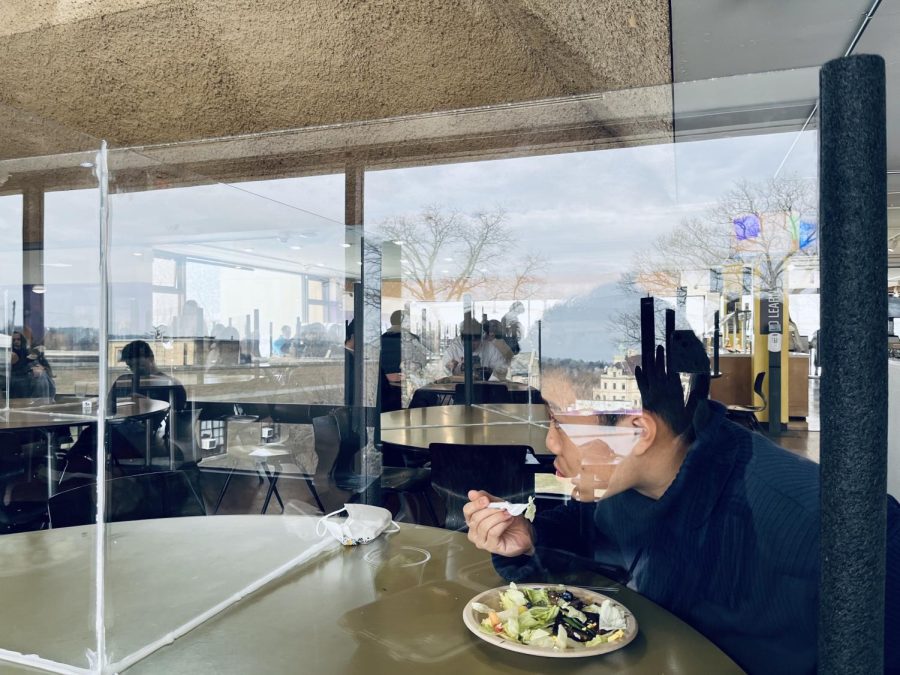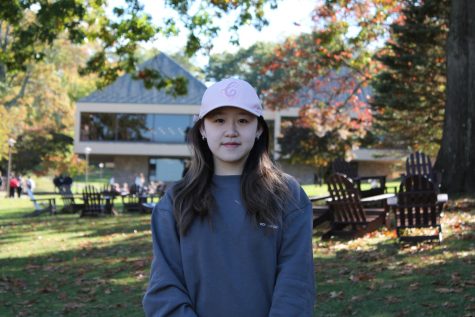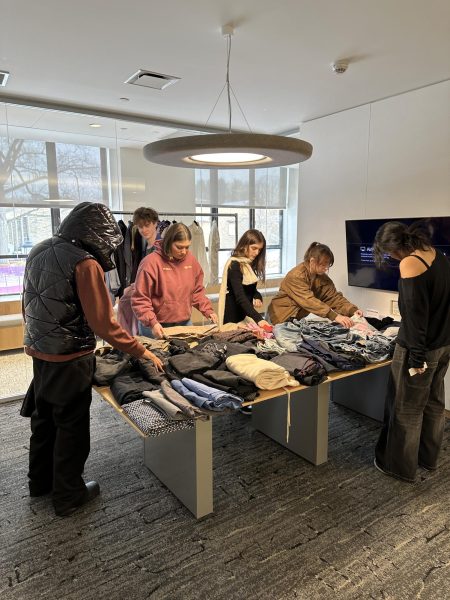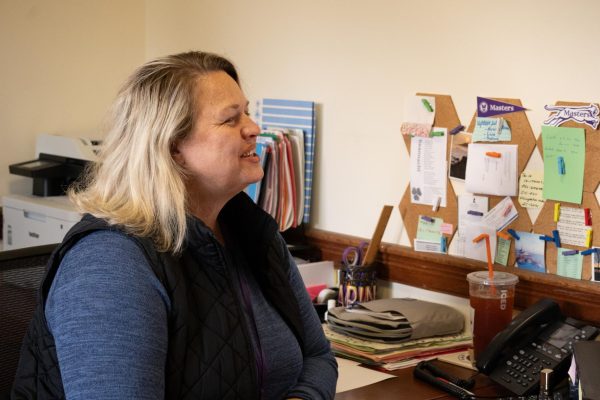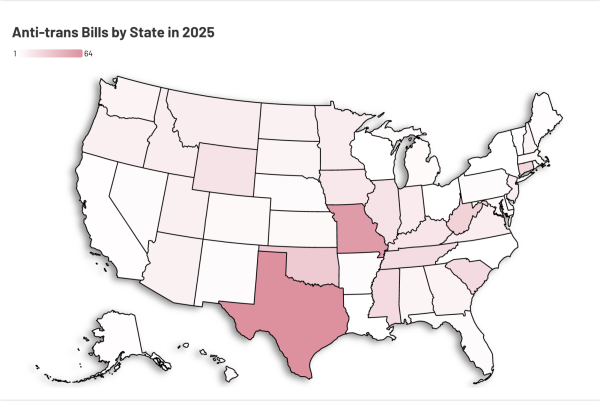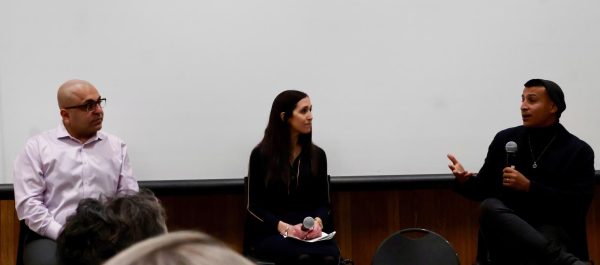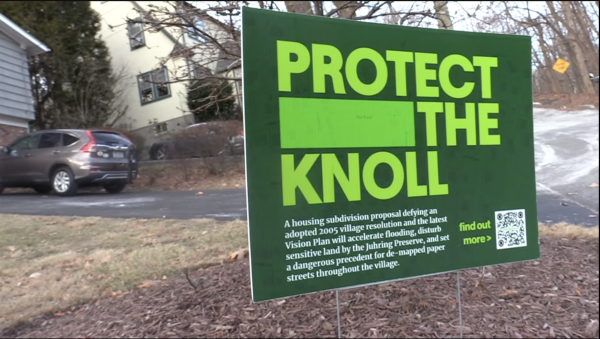Standing Divided: Plexiglass re-instituted in Dining Hall due to Omicron
Junior Tim (Junbo) Yang eats in the dining hall during lunch period.
Due to the increasing infection rate of the newly discovered Omicron variant, which is even more contagious than the SARS-CoV-2 virus, Masters has decided to implement policies to effectively prevent the community from a large-scale outbreak. One of the policies is returning the plastic table-dividers in the dining hall.
With the dividers in place to limit the amount of people allowed at each table, students said they have found difficulties communicating with each other during the lunch period and are disappointed by not being able to gather with all of their friends. Alice Fuller, a freshman in the Upper School, said, “I think the social distancing issue in the dining hall is already being addressed by the split lunches, and it is just incredibly hard for me to understand or hear what my friends are saying through the dividers, and it just takes away the entire socialized time during lunch.”
Many people have expressed that the imposition of dividers severs the tie between students who only gather during lunch period. A lot of students have also reported feeling uncomfortable not being able to enjoy their time of relaxation to the fullest extent. Fuller said, “Having to move to another place in the middle of a conversation because we cannot hear each other just uproots the concentration and eating outside is obviously not an option because of the temperature.”
Meanwhile, the question of whether the cost of the dividers outweighs the benefits remains controversial. According to The New York Times, although plastic barriers stop the transmission of big droplets from sneezes and coughs through air, it does not prevent small aerosol particles like the coronavirus from spreading across the table. Cosima Hansen, a new junior in the Upper School, said, “I would say that just putting the dividers on the table does not prevent the virus because the air still circulates and we are still eating without masks.”
Even with the disadvantages that might reduce the experience of gathering with friends during lunch period, supposedly the most hectic time at school, Head of Upper School Peter Newcomb said that, as discussed with the Health Advisory Team, the dividers are put in place to de-densify students and make sure that each table has the right amount of students so that in-person learning can continue as expected. Newcomb said, “There’s definitely a cost to the community experience by imposing strict policies, and it isn’t something we wanted to do, but is something we needed to do in order to protect the community. Putting the dividers is so far the best option.”
Now only four people are allowed to be present at the same table and masks are required as soon as they leave the table, so the time of maskless interaction is reduced. “We are seeing some positive trends now and the hope is that we can adjust the policies once we are given recommendations to shift.”
Recently, a lot of students are seen violating the rules such as getting rid of the dividers from the table or folding it in half. In order to ensure that the dining hall policy is successfully enforced, the school glued the dividers on to the table to ensure that they cannot be removed. Newcomb said, “In terms of violation of the dining hall policy, I think we all need to be mindful of how we are protecting ourselves and protecting others.”
Despite having so many difficulties, students still continue to follow the protocols and appreciate the privilege of being at school after experiencing uncertainty of remote learning. Hansen said, “Although the dividers are annoying and I often feel lonely when I cannot talk to my friends while eating, I would still follow the rules as long as we don’t have to return to remote learning, and I’m just hoping that the omicron variant will be soon under control.”



